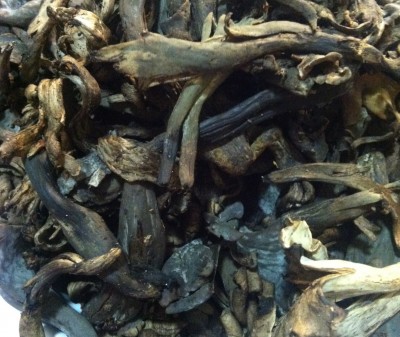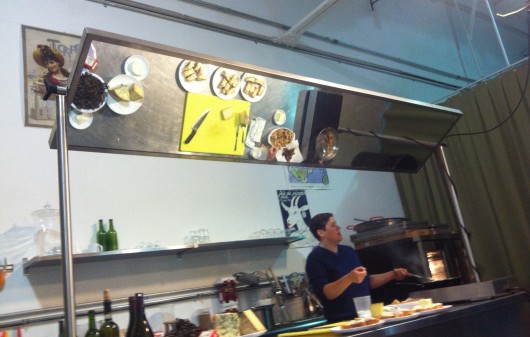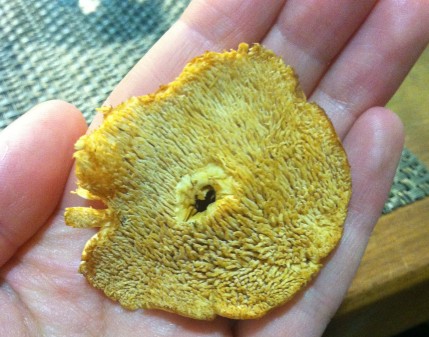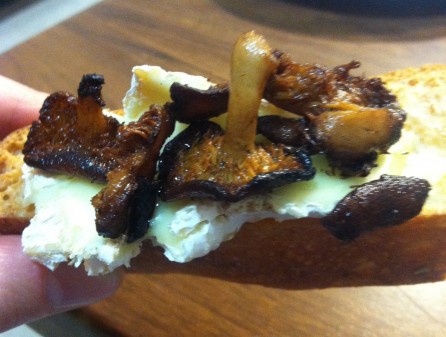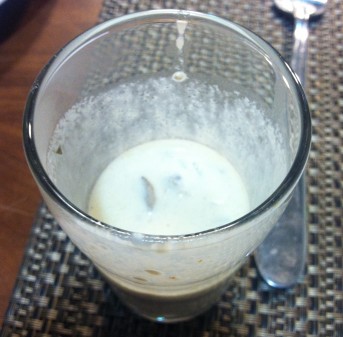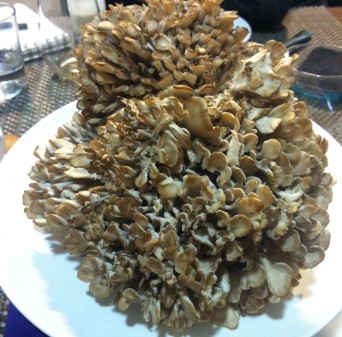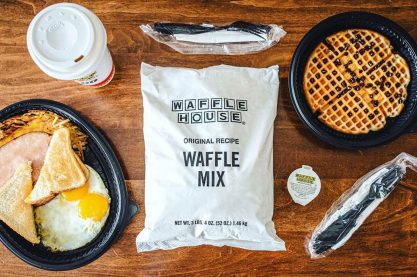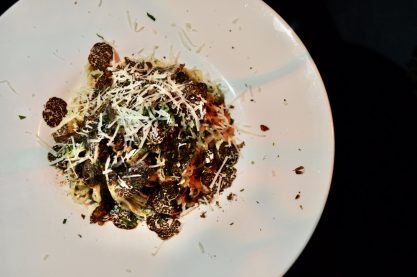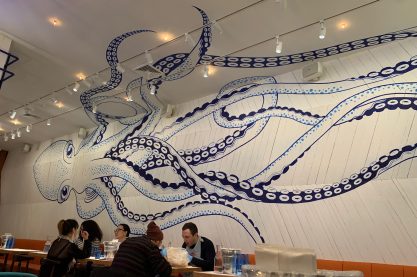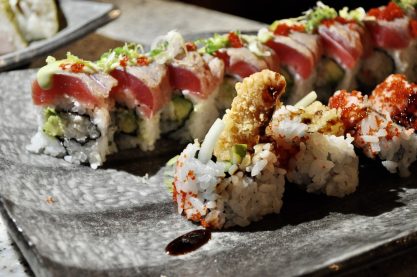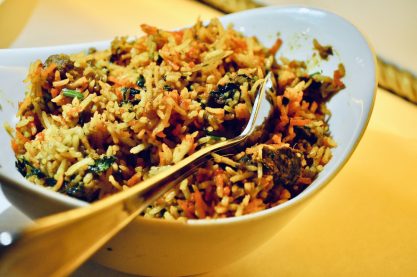Food + Drink
FOOD: Fun with Fungus at Formaggio [Boston -- Cambridge]
One of the top ten ultimate dad jokes is this classic from my dad anytime someone mentions mushrooms: “I love mushrooms! I’m a fun guy!” Appropriately enough, he was the one who discovered Formaggio's mushroom 101 class and signed us up.
Late Saturday afternoon we arrived at the Formaggio Classroom Annex to a room set up like my high school biology classroom with some notable differences. There was the long metal counter at the front with the mirror slanted for students to see; only in this case, we were looking at delicious mushrooms and cheeses being prepared. The other main difference was that our "student" tables were set with silverware and glasses of wine.
For two hours, my dad and I soaked in information about edible fungi that was both theoretical and practical. Our hosts for the evening were Ben Wolfe, a microbiologist at Harvard, and Veronica Pedraza, a cheesemaker at Meadowood Farms in New York.
Ben took us through a brief science lesson on mushrooms, or what he calls “a very complicated mold.” His slide presentation covered the fungus life cycle and described the mycelium, or the underground root structure, as like the Boston T system (so... unreliable in cold weather?)
I also learned a bit about mushroom copulation. For one thing, mushrooms don’t like to inbreed—they match two difference mycelia to make a new mushroom. All of the mushrooms we ate that night were the result of aboveground mushroom intimacy. Mushrooms that copulate under the cover of soil, like truffles, rely on animals to spread them around. (Sounds kind of lazy.)
Some mushroom pointers:
1. When picking mushrooms, always cut off the mushroom rather than pull it up and destroy its underground system.
2. Most importantly: Consult an expert before picking your own mushrooms.
Veronica took over for a bit and cooked up some hedgehog mushrooms (named for the little spindly bits on its underside.) They grow wild across North America and grow symbiotically with trees, providing the trees with nutrients in exchange for the sugar needed to make mushrooms. They also provide me with a tasty snack on bread with a Camembert cheese.
Veronica's tips for cooking fungi:
1. Don’t overcrowd your mushrooms.
2. Mushrooms need high heat so use butter, not oil. (If you want to use an oil, go with grapeseed over olive oil since olive oil will burn.)
3. Cook the mushrooms with an acid, like balsamic vinegar, for best flavor.
We switched over to cheese and Veronica talked about the aging process and the differences in cheese rinds. I learned that the blue in blue cheese is a result of the cheese being poked to create air holes while it’s aging. We tasted an Ekiola Ardi Gasna from the Pyrenees in a PHENOMENALLY creamy mushroom soup, and then we ended the night with stuffed mushrooms.
I had been nervous that two hours of mushroom talk might get boring but the different expertise of our presenters, the delicious treats, and the wine helped keep the class moving. I’m not sure if these types of classes are getting more popular in the Boston area or if finally having an adult full-time job just makes them more accessible. Either way it’s great to see the offerings from different businesses, especially when they’re successful like Formaggio’s. (One of my table mates had just been at another Formaggio class two weeks prior and was already back for more.) Though they can run pricey, I would definitely recommend one of Formaggio’s upcoming classes or a foray into one of their two cheese caves for a special occasion, like a father-daughter outing with a "fun guy."
Formaggio Kitchen
244 Huron Ave, Cambridge MA
Classroom Annex
67 Smith Place, Cambridge MA
